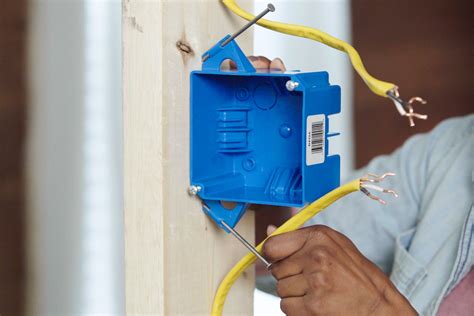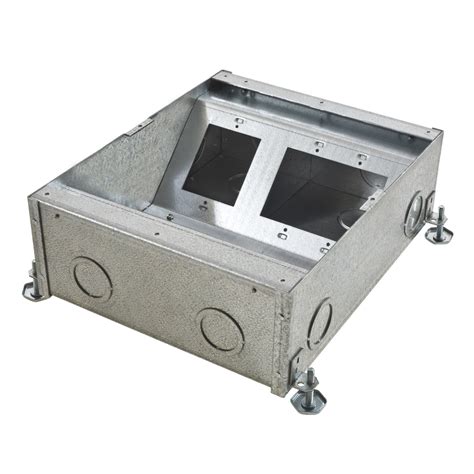electrical back box too deep Depending on the depth Gripfill would work. Fit rawl pug in wall as usual, squidge in some Gripfill to the required depth, insert backbox and screw. Wait until cured. Corner Joint Welding is a process of joining two parts at a 90-Degree angle (right angle), making an L-Shape joint. This type of welding is commonly used to join metal sheets together, as well as pipes and other tubular materials.
0 · electrical boxes too deep
1 · boxes recessed too deep
2 · box recessed too deep diy
West Gate Sheet Metal Inc Products: Sheet metal fabricator; manufactures machinists` precision tools Cement tubing, Plastic tubing, Rubber tubing, Glass tubing, Stone tubing, Non ferrous alloy tubing, Aluminum tubing, Stainless steel tubing, Precious .
I have an electrical box that is set about 1/8" too deep in the wall so when the switchplate is installed the receptable plugs are sunken into the . Depending on the depth Gripfill would work. Fit rawl pug in wall as usual, squidge in some Gripfill to the required depth, insert backbox and screw. Wait until cured. Plastic boxes don't require reaching into the back of the box to install a ground screw and bend the wire around the screw. Also don't need to .Do electrical boxes have to be flush to the finished surface? Can they recess any depth into the wall by as much as 1/8" or 1/4"?
You need box extenions, 1/2 or 5/8" deep to match the DW thickness accordingly. You should be able to find what you need at an electrical supply house. Installed metal back boxes and cabling into walls of outhouse conversion - went back today and customer has increased depth of celotex on walls to 100mm (was 25mm)! All .
I cut back the drywall because the switches were sitting crooked in the box. As you can see the switches and receptacle sit to deep in the cover plate. The electrician I worked with would take a piece of wire and twist it on . You will leave a gap between the socket and the box and debris (bits of plaster etc.) may fall into the backbox. When chasing out your hole for the backbox, have a box handy .
electrical boxes too deep

I've got a bit of a dilemma with walls that are thicker than what the original electrical layout allowed for. All of the boxes (switches, light fixtures, outlets, etc.) are anchored to studs and/or rafters and set at a depth that would be fitting for some thin paneling or drywall. I have an electrical box that is set about 1/8" too deep in the wall so when the switchplate is installed the receptable plugs are sunken into the plate and recessed. How can I position the outlet farther out so that it is flush with the switchplate? Depending on the depth Gripfill would work. Fit rawl pug in wall as usual, squidge in some Gripfill to the required depth, insert backbox and screw. Wait until cured.
Plastic boxes don't require reaching into the back of the box to install a ground screw and bend the wire around the screw. Also don't need to purchase ground screws. Answers based on the National Electrical Code.
Do electrical boxes have to be flush to the finished surface? Can they recess any depth into the wall by as much as 1/8" or 1/4"? You need box extenions, 1/2 or 5/8" deep to match the DW thickness accordingly. You should be able to find what you need at an electrical supply house. Installed metal back boxes and cabling into walls of outhouse conversion - went back today and customer has increased depth of celotex on walls to 100mm (was 25mm)! All boarded and skimmed. I had to cut board to find outlets. Issue is - I can't bring back boxes forward as I can't get behind them. I cut back the drywall because the switches were sitting crooked in the box. As you can see the switches and receptacle sit to deep in the cover plate. The electrician I worked with would take a piece of wire and twist it on his screw driver and make a washer of sorts and put it behind the switches.
You will leave a gap between the socket and the box and debris (bits of plaster etc.) may fall into the backbox. When chasing out your hole for the backbox, have a box handy for checking the depth every so often. If there is a gap between the face of the electrical box and the back face of the drywall, however, you can then buy box extenders. I've got a bit of a dilemma with walls that are thicker than what the original electrical layout allowed for. All of the boxes (switches, light fixtures, outlets, etc.) are anchored to studs and/or rafters and set at a depth that would be fitting for some thin paneling or drywall.
I have an electrical box that is set about 1/8" too deep in the wall so when the switchplate is installed the receptable plugs are sunken into the plate and recessed. How can I position the outlet farther out so that it is flush with the switchplate? Depending on the depth Gripfill would work. Fit rawl pug in wall as usual, squidge in some Gripfill to the required depth, insert backbox and screw. Wait until cured. Plastic boxes don't require reaching into the back of the box to install a ground screw and bend the wire around the screw. Also don't need to purchase ground screws. Answers based on the National Electrical Code.
Do electrical boxes have to be flush to the finished surface? Can they recess any depth into the wall by as much as 1/8" or 1/4"?
You need box extenions, 1/2 or 5/8" deep to match the DW thickness accordingly. You should be able to find what you need at an electrical supply house.
Installed metal back boxes and cabling into walls of outhouse conversion - went back today and customer has increased depth of celotex on walls to 100mm (was 25mm)! All boarded and skimmed. I had to cut board to find outlets. Issue is - I can't bring back boxes forward as I can't get behind them. I cut back the drywall because the switches were sitting crooked in the box. As you can see the switches and receptacle sit to deep in the cover plate. The electrician I worked with would take a piece of wire and twist it on his screw driver and make a washer of sorts and put it behind the switches. You will leave a gap between the socket and the box and debris (bits of plaster etc.) may fall into the backbox. When chasing out your hole for the backbox, have a box handy for checking the depth every so often.
boxes recessed too deep

taupe metallic blue fabric buy in bulk
box recessed too deep diy
One of the most common methods of joining two pieces of metals together is through welding. However, there are several alternatives to welding methods that can be used to do this. It is possible to join metal pieces by methods like riveting, soldering, bolting or brazing.
electrical back box too deep|box recessed too deep diy